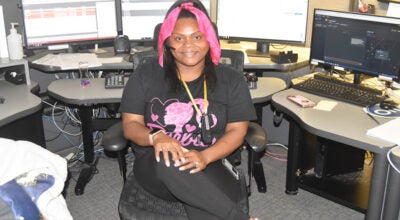Column: The shot clock is just what high school basketball in Georgia needs
Published 8:45 am Tuesday, June 21, 2022
|
Getting your Trinity Audio player ready...
|
Welcome to a new era of high school basketball as the Georgia High School Association (GHSA) implements a 35 second shot clock. In the immortal words of LeBron James upon clinching his first title back in 2012, “it’s about damn time.”
Georgia will be just the ninth state to implement a shot clock at the high school level when the season tips off this fall, but hopefully we will serve as a tipping point for more state high school associations around the country to adopt the shot clock. The higher levels of basketball — both college and professional — all use a shot clock whether it be in the 50 states or international. What better way is there to prepare young basketball players for the pace of the game at the next levels than by introducing the shot clock.
The era of “stall” ball is dead. No longer will teams be able to milk minutes off the clock by controlling possessions. No longer will teams be able to hold the ball at mid court and bark out plays without seeing the precious seconds on the shot clock dwindle down.
Late game scenarios will have more intrigue as teams will not have to resort to fouling in close games late in the fourth quarter. The addition of the shot clock allows for more late game comebacks. Many close games in the pre-shot clock era would grind to a halt as teams would resort to fouling to make sure the team with the lead did not salt the entire clock away. The new shot clock era should allow teams to play at a faster pace late in the game. Yes, there will be games that end in a foul shooting contest but having some games end like that is unavoidable, but what the shot clock era theoretically lessens the amount of games that will end in such a manner.
The shot clock era also brings a new era of defense. Now, coaches and teams will have to think about deploying full-court pressures more often to try and dwindle the shot clock down before the offensive team can even get into their set. Having a shot clock in late game situations will allow coaches to set traps and play quality defense rather than foul and pray for a missed free throw. Obviously, when the clock is under 35 seconds the team on defense will have to foul if trailing, but if there is more than 35 seconds on the game clock, a team can play quality defense rather than resorting to fouling. Teams will still have the opportunity to foul in late game scenarios, but this will give coaches more tools to use to confront a late-game deficit.
There will be push back from coaches who are used to their way of coaching and will have to change offensive and defensive strategies and do not want to deviate from their norm. The biggest problem with the shot clock is logistics. GHSA will have to monitor every high school that is a part of their system to make sure they have the shot clocks in place for the 2022-23 season. GHSA has partnered with Daktronics to supply an easy way to purchase and connect shot clocks to their gym. The cheapest shot clocks through Daktronics are over $4,000 and that does not even include installation fees. GHSA will not be paying for them as each individual school has to foot the bill which will inevitably hurt how much money their athletic program has to spend in the 2022-23 season.
The high schools have known about this plan since 2020 and have had two years to purchase the shot clocks and work the expenses into their budgets. Some high schools have already purchased shot clocks, like LaGrange High School, who purchased theirs over a year ago. It is an expensive and laborious process to bring the high schools in Georgia from the stone age
of stall ball to the modern age of the shot clock era. It is a new dawn for high school basketball in the peach state, and it has been a long time coming.



